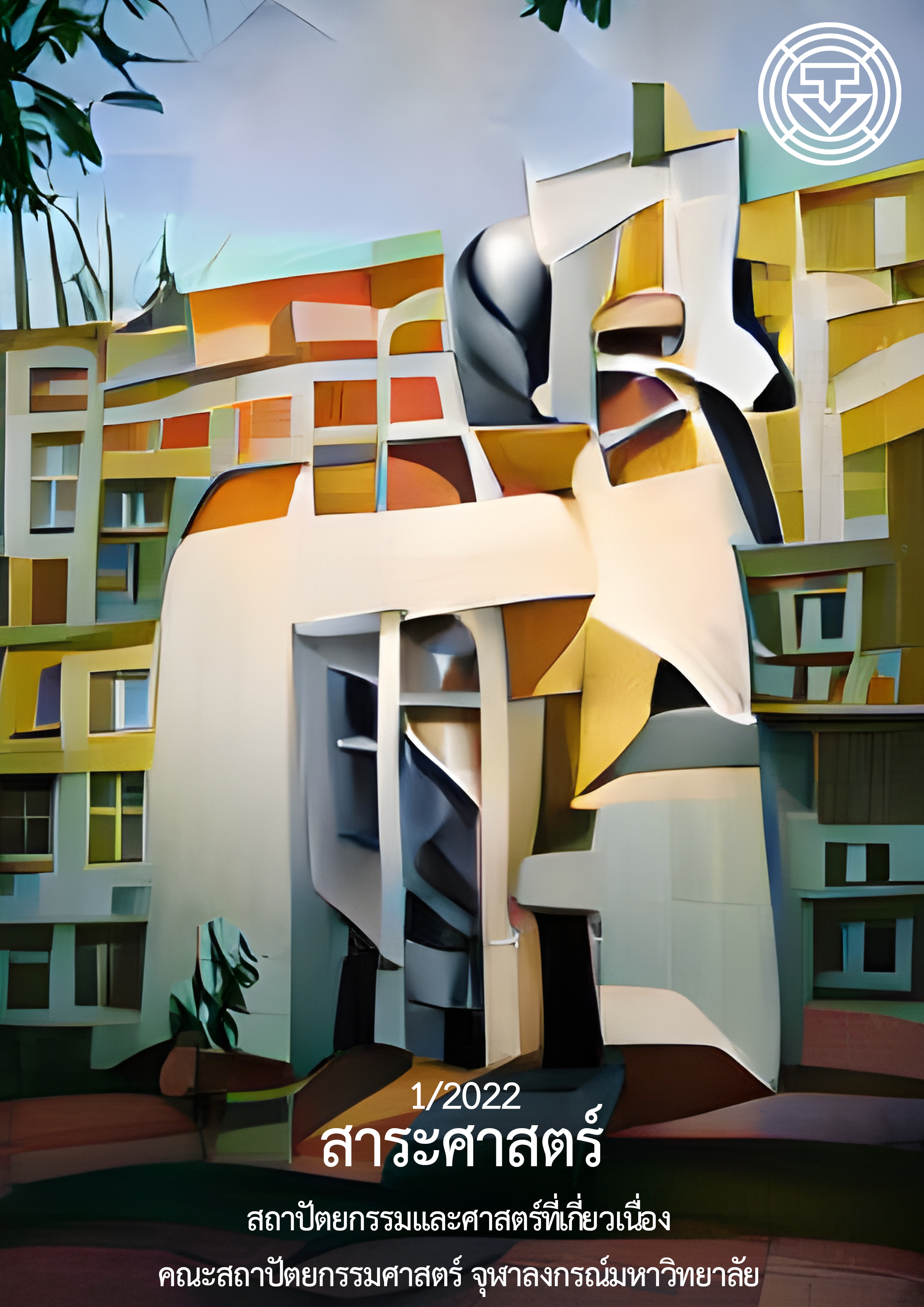Development of Bamboo Louvers Design for Architecture
Main Article Content
Abstract
This research studied the development of sunshade patterns to take advantage of natural light by using natural materials, which is one way to ensure sustainability. Saving and energy efficiency in architecture and design processes requires knowledge from many disciplines and technological advancements to achieve complete goals. Research and studies have shown that bamboo is a durable natural material that can be used in the construction industry and is also a sustainable material. Low cost Easy to make with wisdom and tools, folks reduce the use of industrial materials. The researchers aimed to study, design and develop bamboo-based sunshade patterns for architectural work. To create added value for bamboo products and study the design feasibility and budget for the construction of bamboo-based sunshade patterns for architectural work.
The results of the study of bamboo processing procedures from the establishment and the collection of information from the inquiry into the external physical characteristic requirements of bamboo sunshades for the architectural work of the sample. It led to the development of bamboo sunshade patterns for all nine architectural works, with the researchers bringing the three most selective sunshade patterns to the lead. The development of the model, with the criteria for the selection factors that affect the summary that is the main factor, is the aesthetic factor. Suitable factors for useful use Easy maintenance factors Construction Price Factors
Studies and experiments to develop prototypes have shown that bamboo itself can be adapted or designed in a variety of ways, and the technique of mixing bamboo with scientific chemicals that can leach or repair itself and maintain it easily allows the material to extend its long service life. In terms of structures that will be combined with bamboo, durability should be considered. Processing Section If bamboo is processed into sheets, bamboo sheets can be used to build creative lines more easily than unprocessed bamboo materials, and the patterns used should not be structurally complex and installation materials.
Article Details
References
ทศพล เมืองพรม. (2559). ศูนย์ศึกษานวัตกรรมโครงสร้างไม้ไผ่. (วิทยานิพนธ์ปริญญามหาบัณฑิต, มหาวิทยาลัยศรีประทุม).
ธนา อุทัยภัตรากูร. (2559). โครงการออกแบบและก่อสร้างหอศิลป์ไม้ไผ่. (วิทยานิพนธ์ปริญญามหาบัณฑิต, สถาบันอาศรมศิลป์).
ธวัชชัย อุ่นใจ, นฤมล มณีอินตา และ วรวัฒน์ ปัญญาคำ. (2060, กรกฎาคม– ธันวาคม). สมบัติเชิงกลของไม้ไผ่ 5 ชนิด ที่ผ่านการอบแห้ง. วารสารวิศวกรรมศาสตร์ มหาวิทยาลัยศรีนครินทรวิโรฒ, 12(2), 8-14.
Kamal, M. A. (2013). Le Corbusier’s solar shading strategy for tropical environment: A sustainable approach. Journal of Architectural/Planning Research and Studies, 10(1), 19-26.
Lopkerd, P. (2015). การพัฒนาต้นแบบระบบติดตามแสงอาทิตย์ต้นทุนต่ำสำหรับแผงกันแดดแบบปรับได้ (The prototypedevelopment of low-cost solar tracking system for adjustable sun Louvers). Paper presented at The 6th Built Environment Research Associates Conference 2015 (BERAC 6), July 17, 2015, Faculty of Architecture and Planning, Thammasat University. Pathum Thani: Thammasat University.
Mestek Architectural Group [MESTEK]. (2012). Product catalog of solar shading louver systems - MESTEK by COLT (MF 10 71 13 - Exterior sun control devices). Retrieved April 1, 2016, from http://www.mestek.com/architectural.asp#.VxG-w_l97IUon
Tavares, S. G. & Silva, H-d. C. (2007). Brazilian solar architecture: An analysis of mesp daylighting system. Proceedings of ISES World Congress, 1(5), 476-480.
Velikov, K. & Thün, G. (2013). Responsive building envelopes: Characteristics and evolving paradigms. In Franca Trubiano (Ed.), Design and construction of high-performance homes: Building envelopes renewable energies and integrated practice (pp.75–93). Oxford: Routledge.


